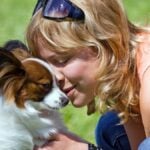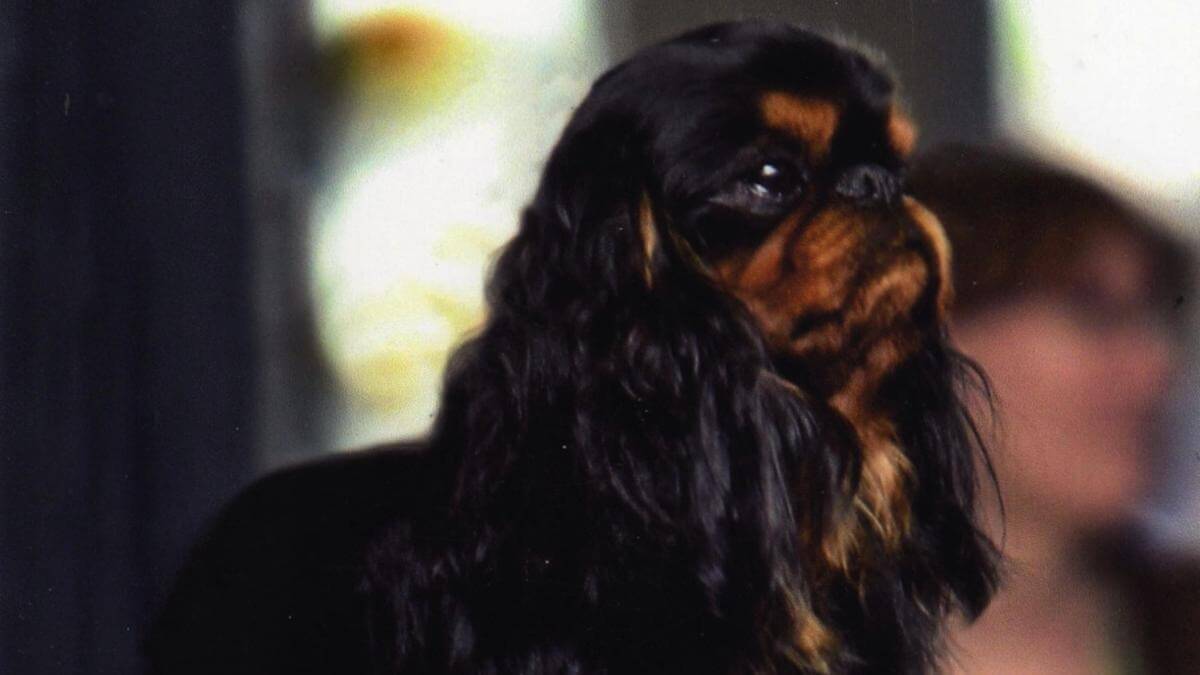
Home » The King Charles Spaniel – A Tale of Commerce, Companionship—and Charm!

The King Charles Spaniel (English Toy Spaniel) comes from a very long history of spaniel-type animals bred over many centuries. We know dogs were transferred through a trade route—the tea trade routes that ran from the Orient through Tibet, across and through Eastern Europe, and over to Italy, France, and Spain, and then up through England. The dogs were bred to be portable and easily transferred. They were companion animals, but they also served as a way of bartering and commerce. So, they became a currency in a sense and were traded for goods or traded for other dogs. They would be given as gifts to a female companion, for example. The early stages of these portable animals were rather multi-purposed, but they were all still within that realm of commerce and companionship.
Eventually, these dogs took on regional looks and true breeds were developed. This was not unique to just the “spaniel world” because we know other breeds have been developed in the same fashion. Think of the Hungarian guardian breeds and the many breeds that can be traced back to this locale. Guardian dogs and livestock breeds have evolved similarly along the same route. Another family of dogs would be the Bichon breeds, which evolved in a similar manner.
It was in the 17th and 18th centuries that these spaniels became quite popular with the upper echelon throughout England and Europe. In the Royal palaces, it was commonplace for spaniel-type dogs to be found in great numbers as companion animals. Curiously, we know from history that the Chinese were doing the same with a breed referred to today as the Pekingese.
The European dogs were managed in great numbers and interbred to form families of spaniel breeds. During the time of Mary Queen of Scots, and followed by the reigns of Charles I and Charles II, the solidifying of the King Charles Spaniel type began through careful selection for a round body, high dome, solid bone, and, of course, a merry temperament.
The royal court was filled with spaniels, and there they were favored as companion lapdogs which would also provide some health benefits. (Gathering lice and fleas away from, and off of, people resulted in medicinal advantages.)
At that point, these spaniel breeds, if you could call them “breeds,” were beginning to form. Dogs were selected for breeding based on characteristics that we know define the breed today. There became a movement to fine-tune an aesthetic that was appealing to a particular breeder or fancier or kennel. And so, divides started taking place that were based on the breed properties which define them; for example, with the King Charles, an interest in shortening the muzzle and rounding the topskull to make it what we have today; a breed with a flatter face and a high dome as this was encouraged because Queen Victoria was very interested in, and influenced by, the Orient.
There were, however, many influences from different regions happening at that time. There was a true cultural exchange happening beyond just the dogs. There was a great deal of influence on European Courts from the Orient in the form of fabrics, home furnishings, foods, and spices. The riches of the Far East were extremely desirable. Palaces were filled with prizes from the Orient. Queen Victoria was so interested in the aesthetic of the flatter faces on her spaniels that breeds such as the Pug and Pekingese began to be incorporated. Dogs brought to her court from Asia were referred to as the Japanese Spaniel, which was the precursor to the Japanese Chin. Those crosses resulted in moving the nose placement of the King Charles breed higher, with the dome higher and rounder than the sister-breed which would be developed much later and become the Cavalier King Charles Spaniel.
Keep in mind, many other breeds were being developed using the same root stock. Brussels Griffons, Papillion, Pug, Pekingese, and Chin were all part of an early-stage “toy breed” or spaniel type, whose development came about over time and location. These breeds share similar body shape as well as ribs, muscle, and character. The individual breed-specific qualities would eventually vary, as would coat type and texture, oftentimes based on the regional climate.
So, during the late 19th century, definitions of individual “breeds” began taking hold. The selective breeding that took place is really what’s responsible for the shortening of the muzzle on the King Charles Spaniel and dividing the breed into the four distinct colors. From that point on, the breed has essentially remained stable, with very few changes introduced to its make and shape.
This summary is a rather basic history of what I call the Toy Spaniel Divide, and the reason for bringing it up is to acknowledge that other breed qualities may be seen shining through in examples of the early English Toys depicted in various art forms. And truth be told, you will also see them in the whelping box today. Breeders are constantly fighting the genetic predisposition to go back to something that once was there; muzzle length, higher ears, and longer bodies. Genetically, these qualities are always there, so no matter which breed you judge, or which breed you breed, you’re constantly fighting these tendencies, which are called the “drag” on a breed.
So, you will see that breeds are constantly evolving. Working to retain the breed-specific differences called for in each Breed Standard requires that those defining traits remain unique and distinct. But as with many breeds, it is very difficult to retain and keep those breed-specific qualities you want in the breed. This is the challenge of any kennel.
Today, you will find many examples of the English Toy breed thriving, with bright, merry temperaments, sound in both mind and body. This is a breed that can run and keep up with the younger, newer model: the Cavalier. Judges should be mindful of overall quality. Judge them with the proper mindset, and do not be forgiving of poor behavior just because they are limited in entry numbers. They must always show with enthusiasm. They should all be sound on four legs, having been plagued with knee problems for so long. They must be round in ribbing, as a good spaniel should always be, and have strong, dense boning. They should never be slab-sided, nor too long. Ears are to be set low and at eye level. The nose is to be set up nearly between the eyes, with a prominent upturn to the underjaw without excessive undershot occlusion. They are to remain toy-sized, but they must not be slight of bone and body.
Enjoy this lovely little breed. Know that it is in good hands today, with much quality being preserved by breeders with skill and knowledge. There is a global community of breeders advancing the breed, sharing and exchanging breeding stock. The state of the breed is strong, as many new and fresh faces are being introduced to this charming toy spaniel.
